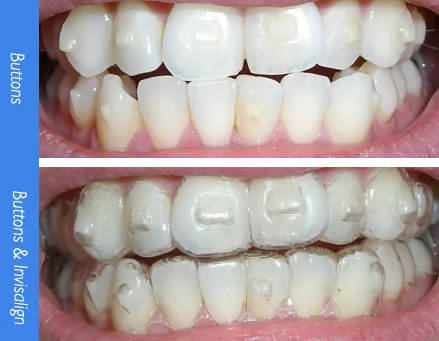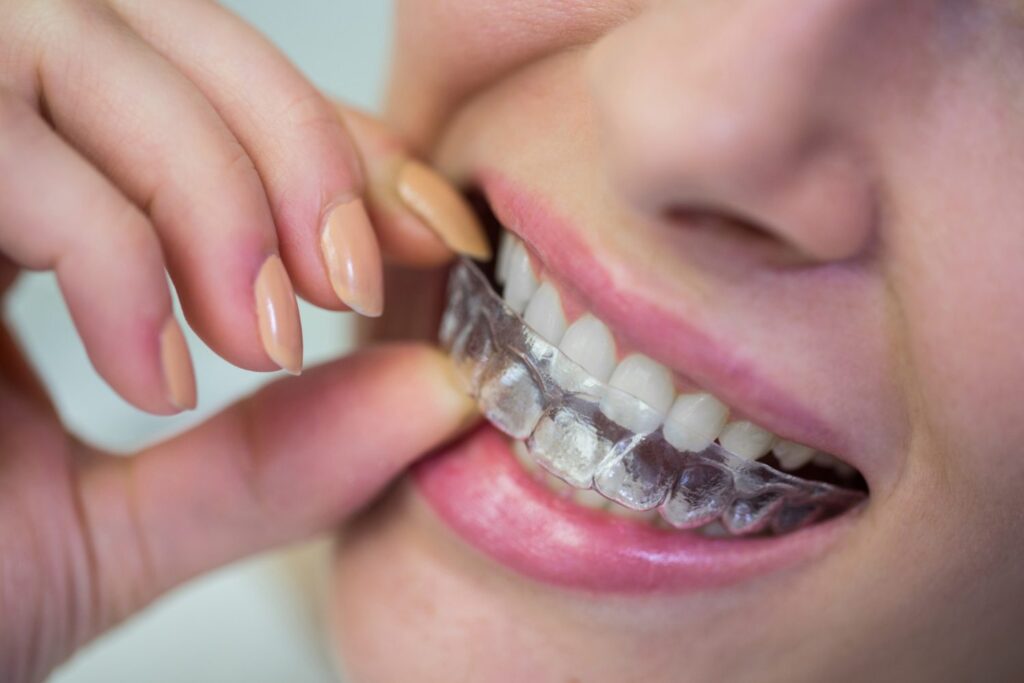Invisalign for Teenagers: A Modern Solution to Straightening Young Smiles
Wiki Article
Invisalign vs. Standard Dental braces: Which Alternative Is Right for You?
When taking into consideration orthodontic treatment, the option in between Invisalign and typical braces offers several essential variables that warrant careful examination. Invisalign offers a very discreet choice with detachable aligners, while traditional dental braces provide a more visible yet effective remedy for severe imbalance.Overview of Treatment Choices

On the other hand, standard braces consist of metal brackets and cables that are bonded to the teeth. This method applies continual pressure in time to achieve placement. While effective for complicated orthodontic issues, standard dental braces require routine sees for adjustments and can posture obstacles in preserving oral health due to the trouble of cleansing around braces and cords.
Both alternatives have their advantages, and the selection commonly rests on certain dental problems, lifestyle preferences, and patient compliance. Ultimately, seeking advice from an orthodontic specialist is critical for figuring out the most suitable therapy plan tailored to private requirements. Comprehending the nuances of each choice can substantially affect the general success of orthodontic therapy.
Aesthetic Factors To Consider
A considerable factor influencing the option between Invisalign and standard braces is the aesthetic allure each therapy offers. Invisalign aligners are crafted from clear plastic, making them essentially invisible when worn. This discreet look is particularly attracting grownups and teenagers who may feel self-conscious regarding their orthodontic therapy. The capacity to preserve a natural smile throughout the placement procedure can significantly boost the individual's self-confidence in social and expert settings.On the other hand, typical dental braces contain metal braces and cables, which can be much more visible. While advancements in orthodontic technology have caused the growth of smaller brackets and colored elastics, conventional braces still maintain a more obvious account. For some people, the presence of dental braces might deter them from looking for required treatment.
Ultimately, the selection between Invisalign and standard braces might pivot on individual choices regarding aesthetic appeals. Patients that prioritize discernment frequently favor Invisalign, while those who are less concerned regarding presence may choose typical dental braces. Comprehending the aesthetic implications of each alternative is crucial for making an informed choice that lines up with one's way of living and choices.
Comfort and Convenience

In regards to comfort, Invisalign aligners are removable, allowing people to appreciate their favored foods without limitation and maintain optimal dental hygiene. Cleaning and flossing are simplified, as the aligners can be gotten throughout these routines, whereas conventional dental braces call for careful maneuvering around braces and cords.
Furthermore, Invisalign's modern system enables for fewer orthodontic visits. Individuals typically get multiple sets of click resources aligners at the same time, which can simplify the therapy process and minimize time spent in the orthodontist's chair. On the other hand, conventional braces demand regular adjustments, making them less convenient for those with hectic routines. Invisalign. Generally, the convenience and convenience of Invisalign make it an attractive selection for lots of people seeking orthodontic therapy.
Treatment Duration and Performance
While both Invisalign and standard braces work in dealing with dental imbalances, the period of treatment can differ dramatically between the two options. Commonly, Invisalign treatment can take anywhere from 12 to 18 months, depending upon the intricacy of the situation. The clear aligners work by slowly shifting teeth right into their wanted settings, and routine follow-ups with an orthodontist aid make sure development stays on track.
In contrast, typical braces frequently call for a longer commitment, typically varying from 18 months to 3 years. This is due to their fixed nature and using brackets and cords, which can be much more reliable for complicated instances and severe imbalances (Invisalign). The treatment performance of standard braces is well-documented, as they enable for specific changes and higher control over tooth activity
Inevitably, the selection between Invisalign and traditional braces may rest on both the anticipated treatment duration and the particular oral concerns available. Consulting with an orthodontist is essential, as they can supply check over here customized suggestions based on private demands, guaranteeing the picked method straightens with preferred results and timeframes.
Cost Comparison and Insurance Choices
Expense plays a substantial role in the decision-making procedure for individuals thinking about orthodontic therapy, whether deciding for Invisalign or traditional braces. Generally, the price of Invisalign ranges from $3,000 to $8,000, while traditional braces commonly set you back in between $2,000 and $6,000. Variables influencing these prices consist of the complexity of the case, the period of treatment, and geographical area.Several oral insurance plans supply partial coverage for orthodontic therapies, yet the specifics can differ commonly. Typically, typical braces may be much more frequently covered by insurance plans contrasted to Invisalign, which some insurers classify as an aesthetic treatment.
In addition, numerous orthodontic techniques use adaptable repayment plans, making both therapy alternatives much more available. Patients should ask concerning prospective financing alternatives and price cuts for ahead of time payments. Assessing the overall price, including insurance policy benefits and layaway plan, is essential for making an informed choice that straightens with both visual preferences and budget plan considerations.

Final Thought
In recap, the choice between Invisalign and typical dental braces Get the facts pivots on numerous variables, consisting of aesthetic choices, comfort, treatment period, and expense. Invisalign provides a discreet, removable alternative that promotes oral health and dietary versatility, while typical dental braces may be a lot more ideal for complicated oral problems and often come at a lower cost point. Eventually, examination with an orthodontist is vital to evaluate individual circumstances and identify the most appropriate treatment option for accomplishing ideal oral placement.When taking into consideration orthodontic treatment, the selection between Invisalign and traditional braces offers a number of essential factors that warrant careful analysis.Comparing Invisalign and conventional braces reveals unique therapy alternatives for orthodontic modification.While both Invisalign and typical braces are effective in fixing dental imbalances, the period of treatment can vary significantly in between the two options.Expense plays a considerable duty in the decision-making process for people considering orthodontic therapy, whether opting for Invisalign or conventional braces.In recap, the option between Invisalign and standard braces hinges on multiple aspects, consisting of visual preferences, comfort, therapy duration, and price.
Report this wiki page